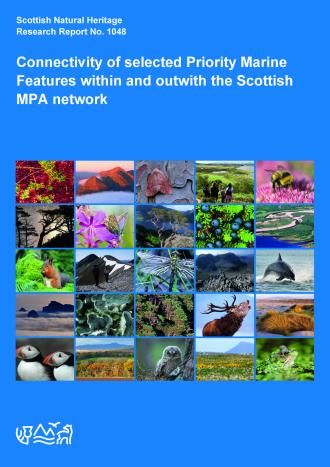Marine habitat connections revealed
16 December 2019
The underwater connections linking some of Scotland’s most important marine habitats have been revealed like never before.
A new report published by NatureScot uses state-of-the-art modelling to shed fresh light on how horse mussel beds around our coasts are linked, as well as examining the connections between flame shell beds in different locations.
Both are protected features in Scotland’s network of Marine Protected Areas (MPAs) and the study modelled the connectivity between populations in both protected and unprotected areas for the first time.
Researchers found that west coast mussel beds could be connected to other beds as far as Orkney and Noss Head. This can happen as mussel larvae ride the prevailing ocean currents and over time, intermediate beds can act as “stepping-stones” along the way.
Meanwhile flame shell beds - found mostly on the west-coast of Scotland and in Orkney’s Scapa Flow - were found to be generally weakly connected, making them more vulnerable to any local damage.
The modelling - a joint initiative between NatureScot, Marine Scotland Science and Heriot Watt University - suggested that horse mussels and flame shells could reach and form beds in a number of new areas in Scottish waters. Seabed surveys in these areas may confirm the model predictions.
NatureScot and Marine Scotland are working on a project to improve protection of sensitive habitats - including known horse mussel beds and flame shell beds - outside the MPA network.
The research will help to identify locations where additional protection could improve connectivity between these habitats. The methodology could also be used in future to predict changes in the network due to climate change.
Flora Kent, NatureScot Marine Ecology Adviser, said: “Horse mussels and flame shells are two amazing species that greatly increase the richness of our seas. The habitats they form provide vital shelter and structure for a range of other marine species, but they are also sensitive to disturbance.
“The new methods used in this study have, for the first time, given us a really fascinating insight into how different populations are connected all around our coasts, both inside and outside of protected areas.
“By revealing these links, the results help us to understand where additional protection could enhance this connectivity and improve the biodiversity of our seas.”
Alejandro Gallego, Marine Scotland Oceanography Group Leader, said: “This work is a good example of how numerical models of our shelf seas can be applied to understand important ecological processes in the marine environment and provide evidence to develop the marine management policies that enhance the protection of these important and sensitive species”
The full report can be read here.




